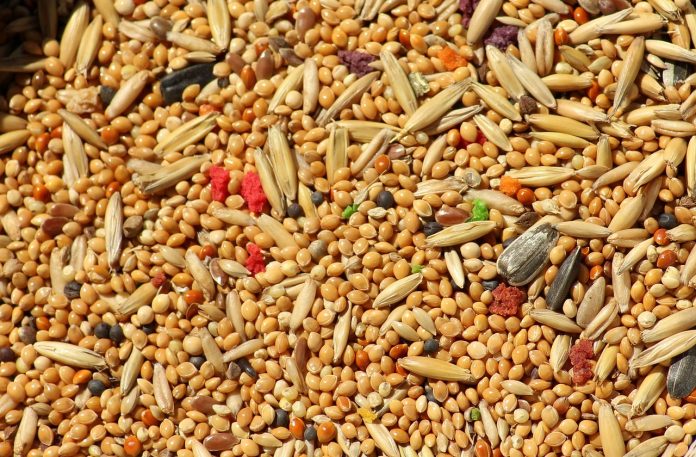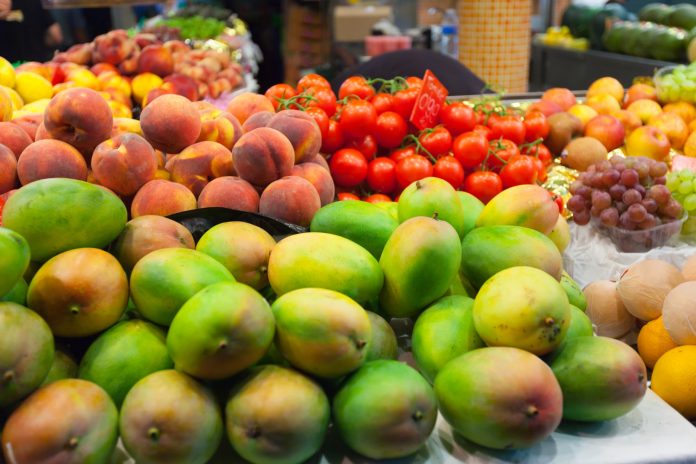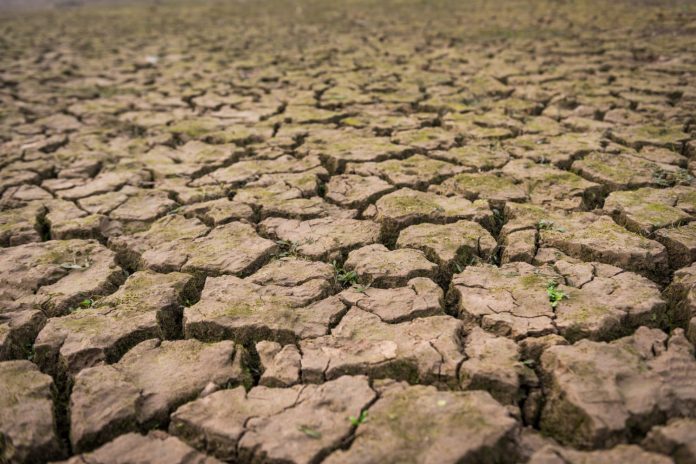The potato is one of the world’s most widely grown and consumed crops, with China and India producing the most. Because of its nutritional value, it is a valuable food source for people all over the world. It is an ideal food source for the poor and working classes, who can now feed their families on a daily basis. The Irish potato famine is one of the most significant events in global agriculture history, particularly in terms of potato cultivation and consumption. A potato blight swept through Ireland between 1845 and 1849, destroying potato farms and spreading disease. They are high in a variety of vitamins and minerals, including vitamin C, potassium, vitamin B6 and iron. Potatoes are also high in resistant starch, gluten-free and have a low glycemic index, which may reduce the risk of colon cancer, celiac disease, and help to regulate blood sugar levels. The essential amino acids in this crop are leucine, tryptophane, and isoleucine. In this article, you will learn how to grow potato crops to increase your farms’s productivity.
Potato Crop at a Glance
Botanical Name: Solanum tuberosum L.
Common Name: Potato, Ground apple, Tater, spud, tuber
Local Names: Potato (English), Aaloo (Hindi), urulakkilangu (Tamil), Bangaladumpa (Telugu), Alu Gedde (Kannada), Batata (Gujarati)
Crop Season: Rabi
Crop type: Horticulture
Soil Requirements
Potato planting can be done in a wide range of soil, from loamy to sandy loam soils. Majority of these soil types are suitable for cultivation of potato crops, because this kind of soil has high organic matter with well-drainage and aerated. The ideal pH range is between 5.2 to 6.4. This crop cannot be grown in saline soils.
Climatic Requirements
For successful potato planting, maintaining the ideal temperature is crucial. The ideal temperature range for potatoes, during vegetative growth is 24 degrees Celsius and during tuber development is 20 degrees Celsius. If the temperature increases upto 30 degree Celsius then tuber formation is affected. The potato cultivation requires long sunshine days with cooler nights for reduced disease incidence.
Package of Practices of Potato
Seed Treatment
Before planting, soak 100 kg tubers in 30g of carbon disulphide in 10 litres of water to break dormancy or soak 100 kg tubers in methoxy ethyl mercuric chloride at the rate of 50 g in 10 litres of water for two to five minutes.
Seed Rate and Spacing
The potato tubers are sown with a row to row spacing of 50 cm and plant to plant spacing of 20cm. In general, 600 to 800 kg tubers are required for the sowing of 1 acre land in potato cultivation.
True potato seed
By using true potato seeds, the cost of seed tubers and the spread of diseases can be greatly reduced. HPS 1/13, HPS 11/13 and HPS 24/111 are varieties developed by the Central Potato Research Institute. Seedlings are transplanted 30 days after sowing and are raised in nursery beds like other vegetables. In potato planting, a volume of 100 gm seed is required to raise one hectare of crop.
Main field preparation of Potato
The potato farm should be well pulverized with one to two deep ploughing and two to four harrowing and ridges and furrows are formed with a spacing of 45cm between ridges.
Irrigation Schedule
The most popular method for irrigating potatoes is drip irrigation. The frequency of irrigation is influenced by the soil and climatic variables. Crops should be watered 7 to 10 days after planting. Water stress during the tuber formation stage will have a negative impact on production of crops. In general, the farmers who carry potato planting using ridges and furrow method irrigate the crop by supplying the water into the furrows directly.
Manures and Fertilizers
The recommended amount of manure and fertilizer for potato varies from state to state and relies on the varieties’ growth habits and production. In general, during last ploughing around 10 to 15 tonnes of FYM per acre should be applied to the potato farm. A basal dose of 40 kg urea, 150 kg SSP and 30 kg MOP is recommended to be applied during the last ploughing operation. Further, top dressing of urea at the rate of 40 kg/acre and 20 kg/acre are recommended to be applied at 30 and 50 DAS in potato cultivation.
Intercultivation Practices
Weeding
In potato planting, weeding should be done on a regular basis to keep the field weed-free. Pre-emergence application of Sencor (Metribuzin 70% WP) at the rate of 250-300 gm/acre or post emergence application of Agil herbicide (Propaquizafop 10% EC) at the rate of 2 ml/lit water or 400 ml/acre were some excellent choices to control weed flush.
Earthing up
Earthing up should be done after thirty days of potato planting at least three to four times otherwise the colour of the potato turns into green which leads to poor quality of the potato.
Crop Protection (Pests and Diseases)
Pests
a) Potato tuber moth (Phthorimaea operculella)
Symptoms
The larvae cause damage in the form of mines in the leaves and/or weakening of the stem, which can break.
Management
- Avoid planting potato tubers in shallow soil. Plant the tubers at a depth of 10 to 15 cm.
- Install pheromone traps 20/ha.
- To avoid potato tuber moth egg laying in exposed tubers, earth up 60 days after planting.
- Spray NSKE 5% or Quinalphos 20 EC 2 ml/lit (ETL 5% leaf damage) to control foliar damage.
- Store the tubers under 3cm thick sand.
- Apply Quinalphos dust to the seed tubers at a rate of 1 kg per 100 kg of tubers.
b) Potato Cut worm (Agrotisypsilon)
Symptoms
During the day, the cutworm larvae remain in the soil at the plant’s base. Some species cut down the stems of young potato plants at night, while others climb the plants and feed on their leaves. Old instar larvae can occasionally tunnel into potato stems, causing plant growth to be disrupted. Tubers near the ground surface may be damaged in such cases. A single larva can destroy several potato plants in a single night.
Management
- During the summer, set up a light trap to attract adult moths.
- Install a sprinkler irrigation system to potato farm and irrigate the field during the day to expose the larvae to bird predation.
- A day after planting, drench the collar region of the plants with chlorpyrifos 50% + cypermethrin 5% (BASF-ADEXAR) at the rate of 1ml/Lit of water.
c) White Grub (Holotrichiasp)
Symptoms
Bore holes are observed on the tuber. More than two holes are frequently found on a single tuber. Because white grubs do not enter and live inside tubers, these holes are not very deep.
Management
- Summer ploughing to expose pupae and adults
- Install light traps and should be active between 7 p.m. to 9 p.m.
- During the months of July and August, handpick the third instar grub
- During the autumn season, apply Phorate 10G @ 25 kg/ha in endemic areas (August – October)
Diseases
a) Late blight (Phytophthora infestans)
Symptoms
They produce dark green, brown and black spots on the surface of potato leaves and stems, especially near the tips or edges where water or dew collects. On the lower surface of the foliage, spores appear white in colour. In the case of tuber blight, white mycelium can be seen on the surface of the tubers.
Management
- Remove any ground creepers that are a source of infection.
- Spray Mancozeb 2 gm/lit water or Chlorothalonil 2.5 gm/lit water at 45, 60, and 75 days after planting.
- Late blight resistant varieties such as Kufri Jyothi, Kufri Malar and Kufri Thangam should be grown.
b) Early blight (Alternaria solani)
Symptoms
Affected leaves develop circular to angular dark brown lesions ranging in size from 0.12 to 0.16 inch (3-4 mm). Concentric rings frequently form in lesions, resulting in the characteristic target-board effect. Leaves that have been severely infected turn yellow and drop. Tubers that have been infected have a brown, corky dry rot.
Management
Spray Difenoconazole 25% EC or Hexaconazole 5% EC at the rate of 2ml per litre of water.
c) Brown Rot (Ralstonia Solanacearum)
Symptoms
The first symptom is brown staining of the vascular ring (hence the name “brown” rot). The most characteristic symptom of brown rot in potato planting at the time of tuber formation is wilting. Bacteria ooze coming on the infected tuber surface and emit a foul odour.
Management
- Choose tubers that are free of the brown rot disease.
- Provide adequate drainage.
- Spray streptocycline sulphate 90% + Tetracycline hydrochloride 10% at the rate of 6 gm per 30 lit of water.
Harvesting, Curing and Grading
Harvesting is possible when the plants turn a yellow-brown colour and begin to dry. Care should be taken not to injure tubers when digging land for tuber harvesting. Irrigation should not be applied one week before harvest. Tubers should be air dried for 10-15 days after harvesting for curing. The process of curing is done in Potatoes properly by heaping them under shade in a ventilated area at around 15°C-20°C. To ensure uniform quality of superior grade tubers and to obtain remunerative returns, they must be graded according to their respective sizes. Potatoes are graded as seed size tubers, large size tubers and chats (potatoes smaller than seed size tubers). The seed size tubers should be separated and saved for seed, depending on their health standards.
Yield
The yield varies depending on the variety. However, the average yield of early-maturing varieties is around 20 t/ha, while late varieties yield around 30 t/ha.
Varieties/Hybrids
KufriAlankar, Kufri Anand, Kufri Ashoka, Kufri Badshah, KufriBahar, Kufri Chipsona-1, Kufri Chipsona-2, KufriSindhuri, Kufri Sutlej.














